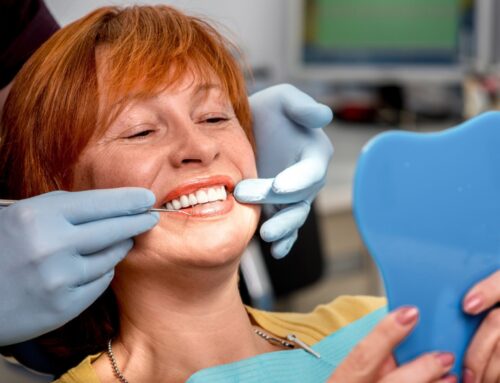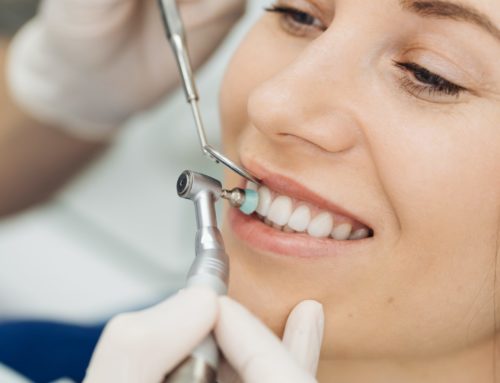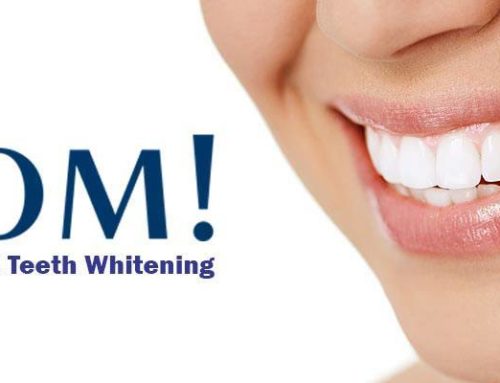When Should You Get Treatment for Receding Gums?
For many dental patients, it’s not uncommon to notice gradual changes in your gums over time that may result in spaces between teeth becoming more evident, and an increase in the visible surface area of your teeth. When this occurs, it is known as ‘gum recession’, and is a dental health issue that should be discussed with your dentist. If left untreated, gum recession can progress at varying rates, and can have substantial negative health impacts for you.
In this article, we are going to explain exactly what gum recession is, as well as the many potential causes that can affect this condition. We will go over some of the common treatments for gum recession, as well as some preventive habits you can incorporate in to your oral health routine to minimize the risks of receding gums. Treating gum recession as early as possible is essential, as the long-term effects can result in permanent damage to your natural teeth, and other oral health issues further down the road. The effects on your general well-being can be significant as well, so if you notice receding gums, you should book an appointment with your dentist at the earliest opportunity to discuss what steps may be necessary.
First, let’s take a look at exactly what receding gums are.
What Are Receding Gums?
In a normal, healthy mouth, the visible surface area of your teeth is actually just about half of what the entire tooth looks like. A large portion of your teeth are contained within your gum tissue and jawbone in order to securely anchor them in place. However, many patients experience a slow, gradual process in the gum tissue surrounding their teeth where it begins to expose more of the surface area of the teeth.
Early Warning Signs of Gum Recession
Since the process usually occurs very gradually, and often over a number of years, it can be difficult for patients to correlate certain oral health symptoms to receding gums. The most common symptom of receding gums is an increase in tooth sensitivity. This is due to a larger portion of the tooth being exposed directly to the environment within your mouth. This sensitivity is generally caused by the exposure of areas of the tooth that may have thinner layers of protective enamel coming in to contact with hot or cold foods and drinks, or certain foods that affect the acidity in the mouth.
Other common symptoms of gum recession include tenderness or sensitivity within the gum tissue, frequent bleeding when brushing or flossing, and widening gaps or spaces between teeth. If you notice any of these symptoms, or are experiencing advancement of any of these, you should arrange to see your dentist as soon as possible for a thorough dental health examination and diagnosis to determine if the cause is indeed related to gum recession, or perhaps another underlying medical issue.
What Causes Gums to Recede?
Gum recession can be the result of many different factors, many of which are related to oral health care habits or lifestyle choices that lead to negative health effects.
The most common cause of gum recession is periodontal disease, also known as gum disease. Periodontal disease is often the result of plaque build-up from poor or inconsistent dental hygiene habits. Ineffective or infrequent brushing, failure to floss between teeth, and skipping dental hygiene checkups are all related to periodontal disease. As the gums come under attack by the plaque bacteria, the supportive tissue begins to break down and soften, causing gums to recede from the teeth and increases the risk of other dental conditions, such as tooth loss.
Gum recession can also be due to hormonal changes in the body, either as a result of natural aging or from certain hormone-altering medications. In either case, you should be diligent in discussing these issues with your dentist in order to ensure you receive the most effective care for your teeth under these types of circumstances.
In addition, gum recession can also be caused by lifestyle choices such as smoking and the use of other types of tobacco products. The effects of tobacco on the human body, and especially the mouth, are well-documented. Tobacco users are significantly more likely to experience greater levels of plaque build-up and an increased difficulty of effectively cleaning and removing bacteria from the mouth. Staining of teeth, swollen gums, and a much greater risk of oral cancer are all directly related to the use of tobacco products. We strongly urge stopping any and all use of tobacco products to help minimize the risk of health problems such as these.
Receding gums could also be the result of grinding teeth or clenching teeth, particular during the sleep cycle. This frequent grinding and clenching of the teeth puts a great deal of strain and stress on the gums and jaw and has been shown to result in gum recession. If you are experiencing jaw soreness, sensitive teeth, or your dentist observes abrasion or excessive wear of your teeth, they will likely recommend you be assessed for a special mouth guard to wear in order to prevent grinding and reduce the pressure from clenched teeth. Your dentist can also provide assistance in examining your lifestyle for potential causes for the grinding and clenching, including excess of stress and other lifestyle factors.
How Can Gum Recession Be Treated?
Before we list the ways of treating gum recession once it has started to occur, it bears repeating that it’s always best to prevent it by understanding the causes and incorporating the best dental health and lifestyle habits that are proven to reduce your risk. If tobacco use is deemed to be a factor, the use of such products should be ceased. Proper dental care routines need to be followed, regular checkups and hygiene treatments are needed, and factors such as tooth grinding should be remedied using appropriate methods.
That being said, there are many cases of gum recession such as those that are related to medication, natural aging, or hormonal changes that are unavoidable and must be treated through dental or surgical methods in an effort to halt the progression and promote a reversal of the effects.
Root Planing
The most common method of treating gum recession in the early stages includes a process known as root planing. This is essentially a more intensive cleaning of the teeth, specifically focusing on removing plaque and bacteria from the teeth under the gum line and the pockets surrounding the roots of the teeth.
Gum Grafting
For more severe cases of gum recession, likely when gum disease has progressed, your dentist may recommend a gum graft in order to repair the damaged gum tissue and restore the health of your mouth. In this process, the damaged or diseased gum tissue is surgically removed and sections of healthy gum tissue are grafted in place to restore the affected areas.
One of the newest and most innovative methods for rejuvenating the gums and preventing or reversing the effects of gum recession is known as the Pinhole Surgical Technique, or PST.
With this method, a tiny incision is made in the affected gum area and specialized instruments are used to adjust and reposition the supporting tissue around the teeth and restore the condition of the gums to a healthy state. PST has the advantages of being far less invasive than gum grafting and can be used to treat multiple affected areas in the mouth within a single visit. In many cases, the pinhole surgical technique is an effective alternative for patients that would otherwise require a gum graft.
Conclusion
It’s clear to see that although gum recession is a very commonplace affliction for many patients, it does not need to be so. Reducing the risks of developing receding gums can be as simple as some alterations to your oral care habits or taking steps to address other factors affecting your general health and well-being, such as curbing the use of tobacco products. However, even in the event that gum recession does occur, taking action early is the best way to reverse the effects and repair the affected areas of your mouth.
If you feel concerned about gum recession, or have begun to experience any of the symptoms described in this article, book an appointment and consult with your dentist as soon as possible. They will be able to determine the cause and recommend the most effective gum recession treatment options for you.
Appointment Request
If you’re interested in any of our procedures, and would like to meet with one of our dentists to discuss options, costs and get additional information, complete this short form and we’ll give you a call to arrange for a no-obligation appointment at our Barrie clinic.









